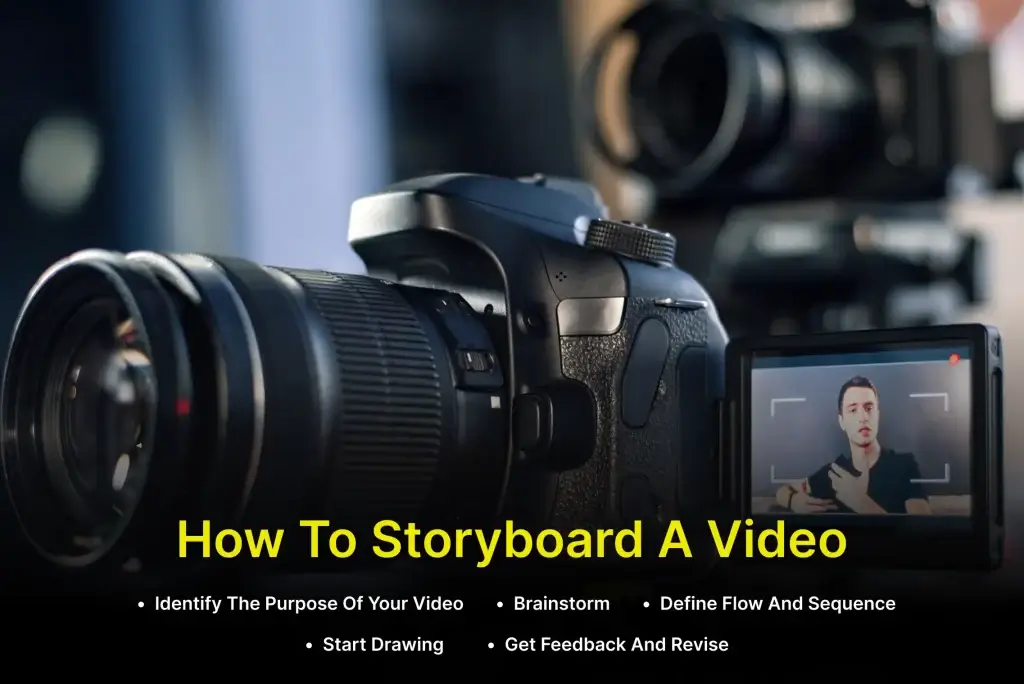Making a good marketing video that conveys the right message is quite challenging. Well-planned videos are more likely to be enjoyed and stand out. Out of billions of marketing videos posted on the internet daily, only a few serve their actual desired results. A storyboard is a very important step in the video planning process. Creating a storyboard for a video will help the producer visualize what the video will look like. It provides a visual representation of scenes, shots, actions, and scripts before filming. Learn how to storyboard video projects with FX Productions Canada, plan scenes, visualize ideas, and bring your story to life with clarity.
How to Storyboard a Video

Identify the Purpose of Your Video
Carefully focus on the message you want to convey from your video. What is the ultimate goal of your marketing video? Can it increase sales for your product or service; bring an awareness for your brand; or can it be a resource for hiring for your organization. Once you identify the goal of your video, it will be easier for you to create an ideal storyboard.
Brainstorm
Start by brainstorming all your ideas for the video, and involve your team members and colleagues to contribute as many ideas as possible. Additionally, ask thoughtful questions to gain a better understanding of different perspectives. Moreover, encourage out-of-the-box thinking and hold back any criticism to create a more open and welcoming discussion. After all, people tend to be more creative when they don’t fear being judged or criticized.
Define Flow and Sequence
Once you are clear on what the video is aiming for and how you can achieve it, start working on the timeline of your video. What should be the starting point of your video? How will the video smoothly transition to the middle, and what will be the ending message for the user? The video must have a proper flow and should make sense to the viewer. Scenes should be well connected and follow a proper sequence. They should logically align with the story’s timeline.
Start Drawing
Slowly start drawing your video storyboard on a piece of paper or use an online tool:
- Shot Details
Number each shot to organize the scenes clearly and help the production crew follow the sequence. Additionally, include detailed shot angles to guide composition and ensure consistency. Furthermore, provide clear descriptions for each scene to enhance understanding, which will allow for smoother transitions between shots. This approach will ultimately result in a more cohesive and well-executed production.
- Shot Location
Add a shot location where you want your scenes to be filmed. Shot location also impacts the background, atmosphere, and narrative of the shots.
- Add Script
Add text details under each frame. The script should align with the shots and explain what’s going on in each scene.
Get Feedback and Revise
Seek feedback from outsiders to determine if they understand the message you aim to convey through the video. Storyboards are an excellent tool for identifying any inconsistencies between the concept, the final script, and the shots. Based on the feedback received, revise your shots or script accordingly to ensure clarity and alignment with your vision.
How to Plan Your Video Projects:
Careful planning can play a significant role in achieving the goal of your video projects. If you spend time planning your project, you are less likely to make mistakes during actual production. This exercise will save you a lot of your time, resources, and money. Plan your video project using different online tools. Storyboarding is a common technique used to plan video projects. There are a lot of tools available online that allow you to create video storyboards for your video projects. Some of the most popular and easy to use video storyboard tools are listed below:
- StoryboardThat
- Canva
- Photoshop
- Boords
- Storyboarder
- Make Storyboard
- Plot
- StudioBinder Inc.
- ShotPro
Some of the above mentioned tools are free of cost while others are paid. These tools have made storyboarding easy, especially for beginners.
Conclusion
To create an impactful video that serves a marketing purpose, it needs proper planning and production. While planning a video project, storyboarding is an essential step that identifies any inconsistencies or flaws in a storyline. It streamlines the idea and ultimate goal of the video. Using storyboards in the planning process makes production a lot smoother and easier to manage. It helps minimize the need to change the shot while in actual production, resulting in saving costs as well as resources.



